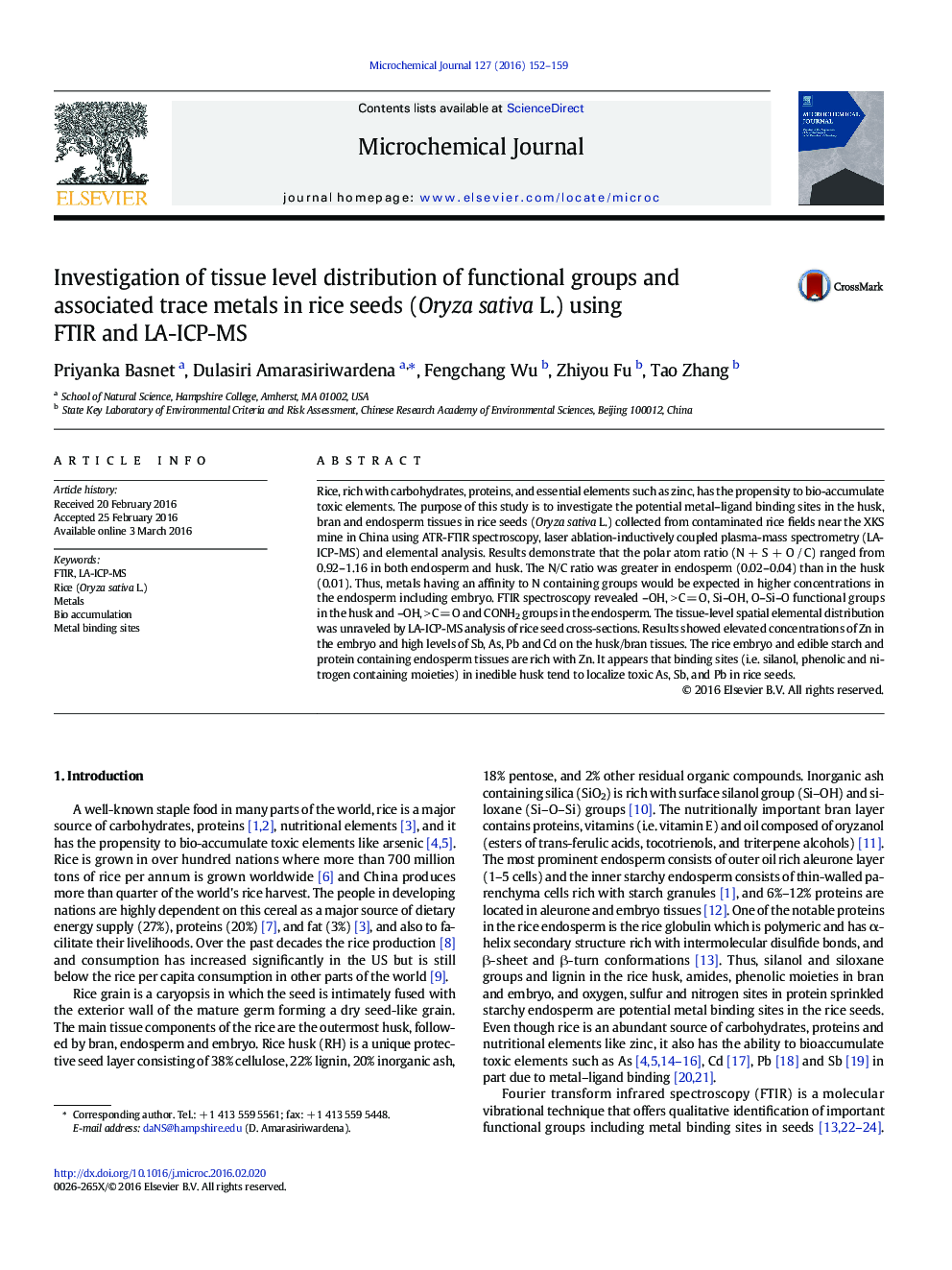| Article ID | Journal | Published Year | Pages | File Type |
|---|---|---|---|---|
| 1227513 | Microchemical Journal | 2016 | 8 Pages |
•The polar atom ratios show that (N + S + O) / C is ~ 1:1 in both husk and endosperm, indicating abundance of metal binding sites.•Si containing functional groups like silanol and siloxane in the husk are responsible for metal accumulation.•LA-ICP-MS and FTIR techniques provide spatial elemental distribution and metal binding moieties in rice seed tissues, respectively.•The edible embryo and endosperm are rich with Zn.•General order of metal concentration in rice seeds from the paddies in the vicinity of XKS mine was: Zn > Cd > Sb > Pb > As.
Rice, rich with carbohydrates, proteins, and essential elements such as zinc, has the propensity to bio-accumulate toxic elements. The purpose of this study is to investigate the potential metal–ligand binding sites in the husk, bran and endosperm tissues in rice seeds (Oryza sativa L.) collected from contaminated rice fields near the XKS mine in China using ATR-FTIR spectroscopy, laser ablation-inductively coupled plasma-mass spectrometry (LA-ICP-MS) and elemental analysis. Results demonstrate that the polar atom ratio (N + S + O / C) ranged from 0.92–1.16 in both endosperm and husk. The N/C ratio was greater in endosperm (0.02–0.04) than in the husk (0.01). Thus, metals having an affinity to N containing groups would be expected in higher concentrations in the endosperm including embryo. FTIR spectroscopy revealed –OH, > C = O, Si–OH, O–Si–O functional groups in the husk and –OH, > C = O and CONH2 groups in the endosperm. The tissue-level spatial elemental distribution was unraveled by LA-ICP-MS analysis of rice seed cross-sections. Results showed elevated concentrations of Zn in the embryo and high levels of Sb, As, Pb and Cd on the husk/bran tissues. The rice embryo and edible starch and protein containing endosperm tissues are rich with Zn. It appears that binding sites (i.e. silanol, phenolic and nitrogen containing moieties) in inedible husk tend to localize toxic As, Sb, and Pb in rice seeds.
